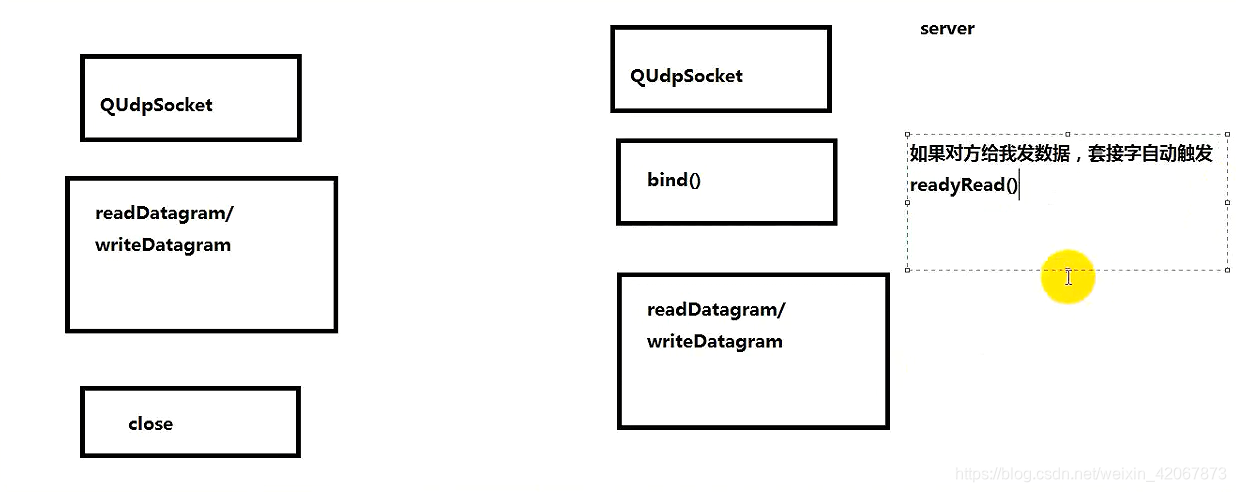首先展示UDP通信中的流程:

一、具体代码展示
1、两端通信只需要通信两端同时使用<QUdpSocket>内提供的socket进行通信即可,无服务器和客户端之分
头文件:
#ifndef UDPSERVER_H
#define UDPSERVER_H
#include <QWidget>
#include <QUdpSocket>
namespace Ui {
class UdpServer;
}
class UdpServer : public QWidget
{
Q_OBJECT
public:
explicit UdpServer(QWidget *parent = 0);
~UdpServer();
private slots:
void on_pb_send_clicked();
void on_pushButton_3_clicked();
void dealSomething();
private:
Ui::UdpServer *ui;
QUdpSocket *udpSocket;
};
#endif // UDPSERVER_H
具体实现:
#include "udpserver.h"
#include "ui_udpserver.h"
#include <QString>
#include <QByteArray>
UdpServer::UdpServer(QWidget *parent) :
QWidget(parent),
ui(new Ui::UdpServer)
{
ui->setupUi(this);
//显示为通信套接字开辟空间,并指定父对象
udpSocket = new QUdpSocket(this);
setWindowTitle("服务器端口: 8888");
udpSocket->bind(8888);
//当对方成功把数据发送过来
connect(udpSocket, SIGNAL(readyRead()),
this, SLOT(dealSomething()));
}
UdpServer::~UdpServer()
{
delete ui;
}
void UdpServer::on_pb_send_clicked()
{
QString str = ui->te_write->toPlainText();
QString ip = ui->le_ip->text();
quint16 port = ui->le_port->text().toInt();
udpSocket->writeDatagram(str.toUtf8(), QHostAddress(ip), port);
}
void UdpServer::on_pushButton_3_clicked()
{
}
void UdpServer::dealSomething()
{
//接受信息
char buff[1024] = {0};
QHostAddress add;
quint16 port;
qint64 len = udpSocket->readDatagram(buff, sizeof(buff),
&add, &port);
if(len > 0)
{
QString str = QString("[%1:%2] %3").arg(add.toString()).arg(port).arg(buff);
ui->te_read->setText(str);
}
}
二、效果展示:









 本文详细介绍了UDP通信的基本流程,通过Qt库实现了一个简单的UDP服务器。代码展示了如何使用QUdpSocket进行数据发送与接收,包括初始化通信套接字、绑定端口、发送数据以及接收并处理数据的过程。
本文详细介绍了UDP通信的基本流程,通过Qt库实现了一个简单的UDP服务器。代码展示了如何使用QUdpSocket进行数据发送与接收,包括初始化通信套接字、绑定端口、发送数据以及接收并处理数据的过程。

















 9154
9154

 被折叠的 条评论
为什么被折叠?
被折叠的 条评论
为什么被折叠?










